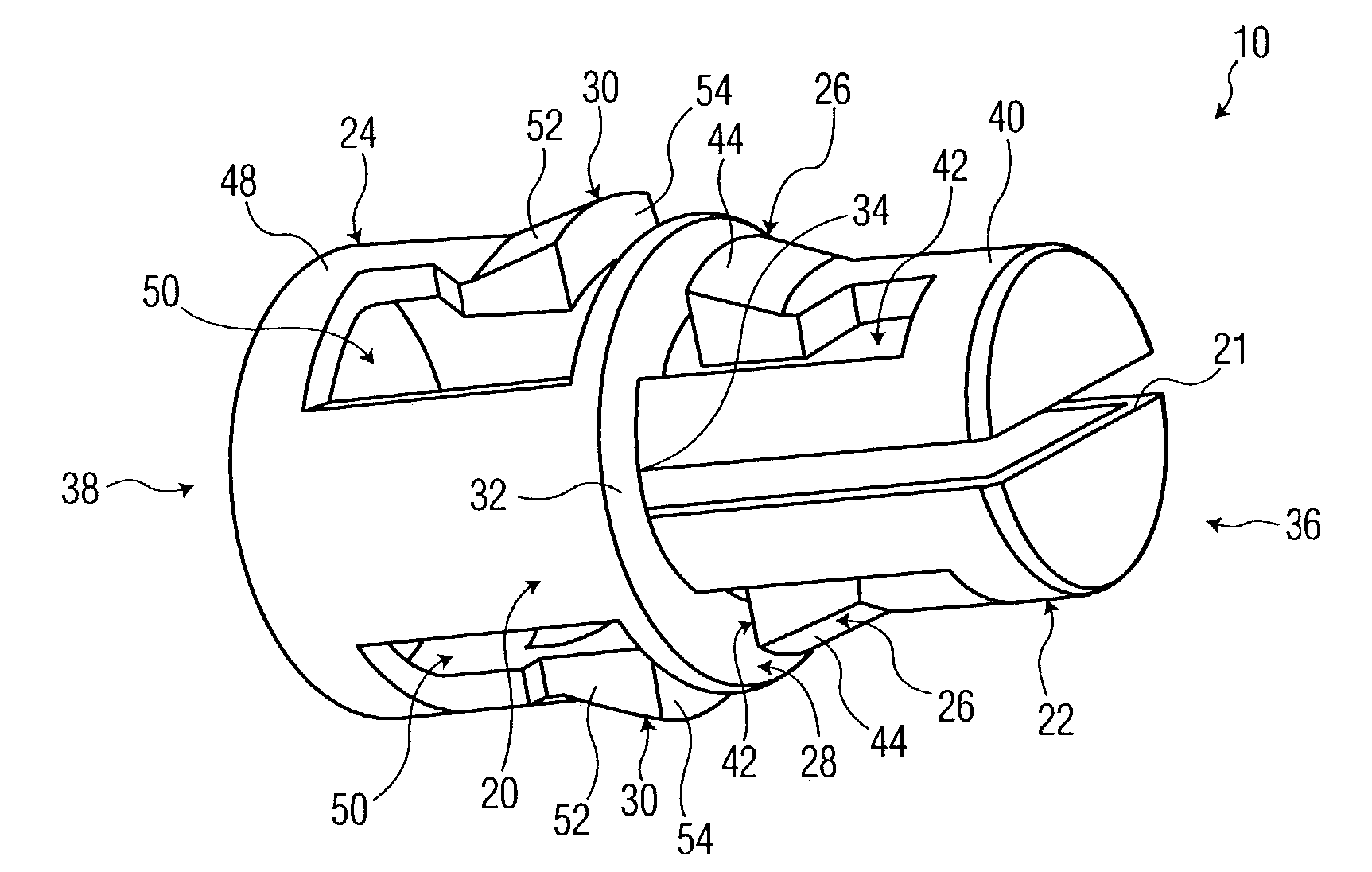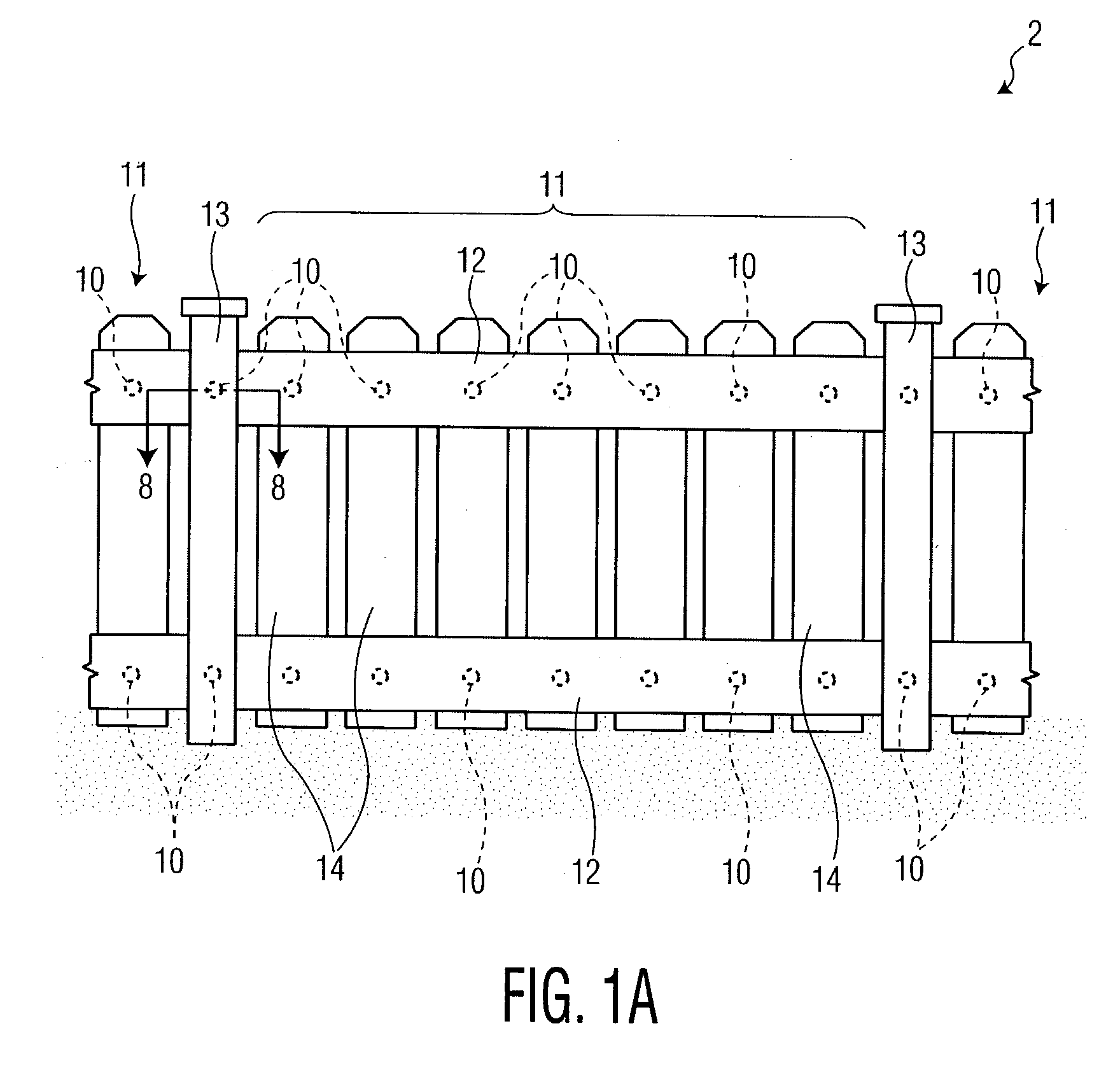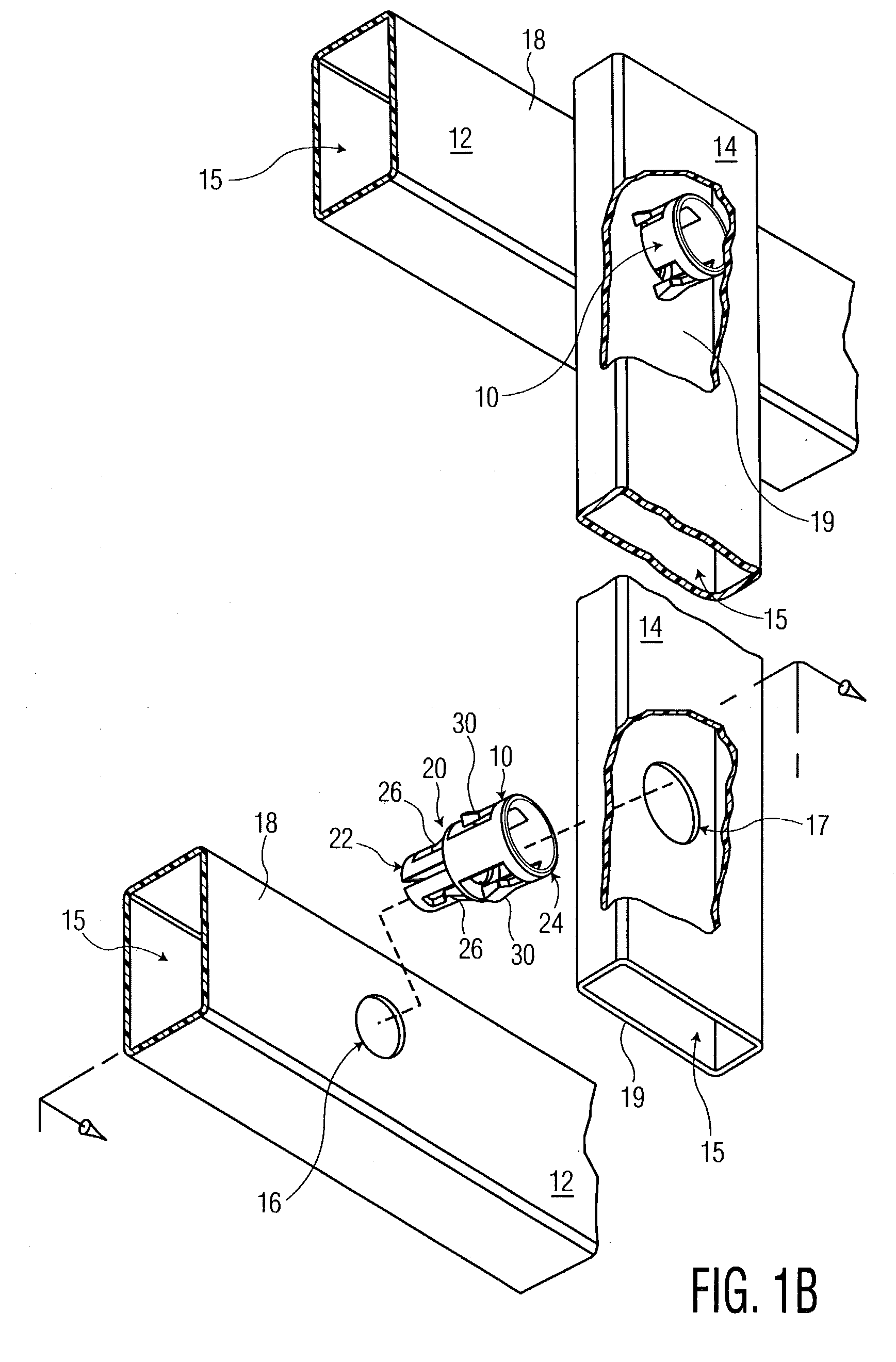Self-locking fastener
a self-locking, fastener technology, applied in the direction of rod connections, screws, coupling device connections, etc., can solve the problems of detracting from the aesthetic appearance of the assembled fence, difficult to hide or conceal the fasteners used, and high labor intensity and time consumption, so as to achieve convenient installation, durable and intact effect of securing structural members, sheet materials and other components
- Summary
- Abstract
- Description
- Claims
- Application Information
AI Technical Summary
Benefits of technology
Problems solved by technology
Method used
Image
Examples
third embodiment
[0054]Referring to FIG. 15, a fastener 100 is shown for the present invention. The free ends 44 and 52 of the first and second arms 26 and 30, respectively, each include stepped portions 102, respectively. The stepped portions 102 are adapted to facilitate the use of the fastener 100 to secure together fence components having varying thicknesses in their respective sidewalls such as sidewalls 18 and 19, shown in FIG. 8, where the first and second arms 26 and 30 are prevented from extending fully into the unloaded position. As shown in FIG. 16, the first and second arms 26 and 30 are able to extend into the unloaded position, and retain the sidewalls 18 and 19, respectively, by the corresponding retaining end surfaces 46 and 54 thereof through pawl-like action. As shown in FIGS. 17 through 19, for progressively greater thicknesses of sidewalls 18 and / or 19, respectively, the first and second arms 26 and 30 are prevented from engaging the respective sidewalls 18 and 19 via the retaini...
fourth embodiment
[0055]Referring to FIG. 20, there is shown a fastener 110 for the present invention. The fastener 110 includes all the features of the fastener 10 shown in FIG. 2. The fastener 110 further includes an opening 112 located at the distal end 36 thereof. The opening 112 provides a passage of objects such as wires and the like through the interior cavity 56 from one end to the other.
[0056]Although various embodiments of the invention have been shown and described, they are not meant to be limiting. Those of skill in the art may recognize various modifications to these embodiments, which modifications are meant to be covered by the spirit and scope of the appended claims. For example, a fastener can be provided with the first illustrated embodiment, and further with any one or more of the second through fourth embodiments. Also, a fastener can be provided having the second portion 24 identical to the first portion 22, whereby the flange 28 will provide a stop surface for each portion, but...
PUM
 Login to View More
Login to View More Abstract
Description
Claims
Application Information
 Login to View More
Login to View More - R&D
- Intellectual Property
- Life Sciences
- Materials
- Tech Scout
- Unparalleled Data Quality
- Higher Quality Content
- 60% Fewer Hallucinations
Browse by: Latest US Patents, China's latest patents, Technical Efficacy Thesaurus, Application Domain, Technology Topic, Popular Technical Reports.
© 2025 PatSnap. All rights reserved.Legal|Privacy policy|Modern Slavery Act Transparency Statement|Sitemap|About US| Contact US: help@patsnap.com



